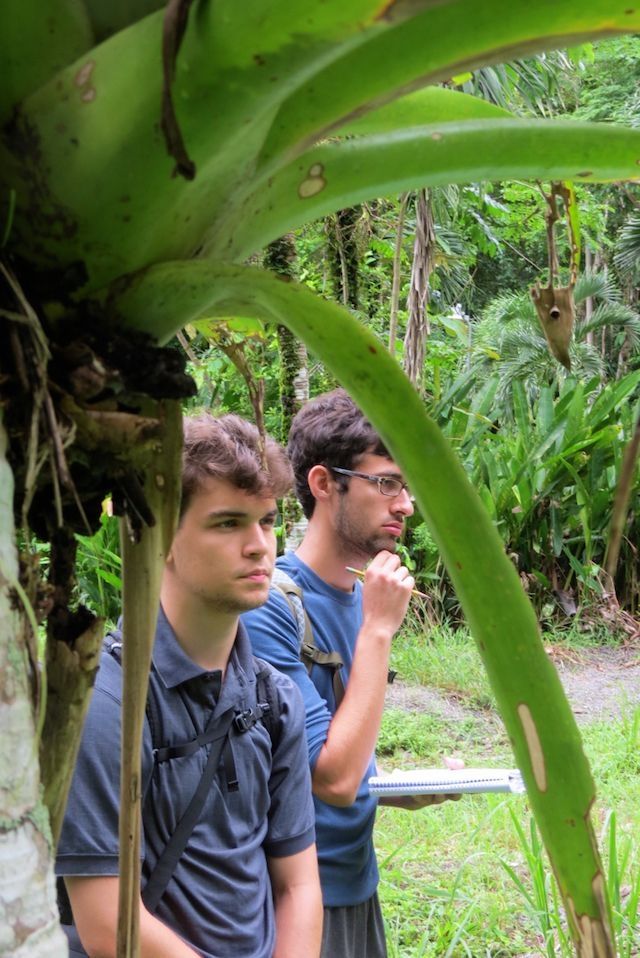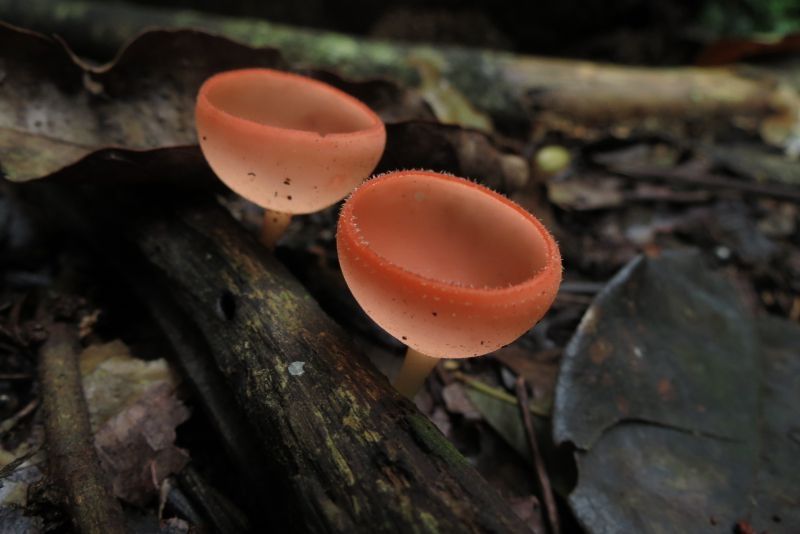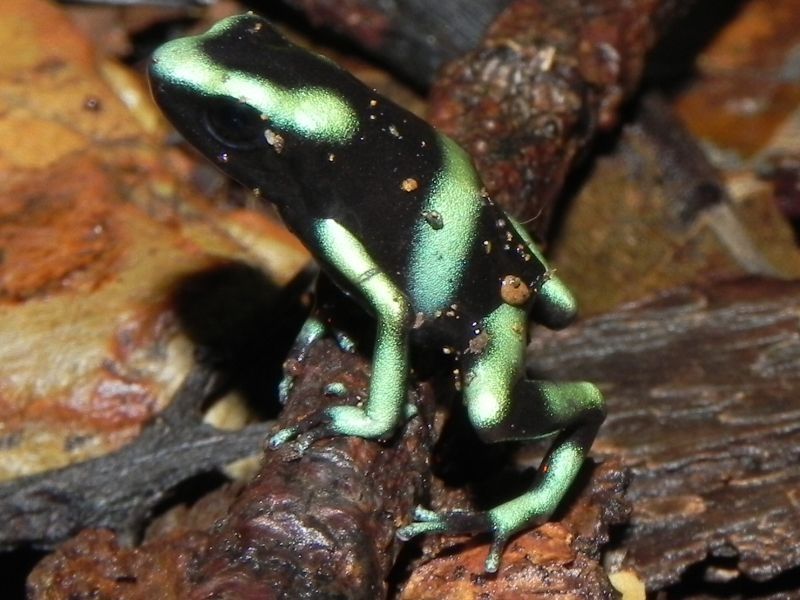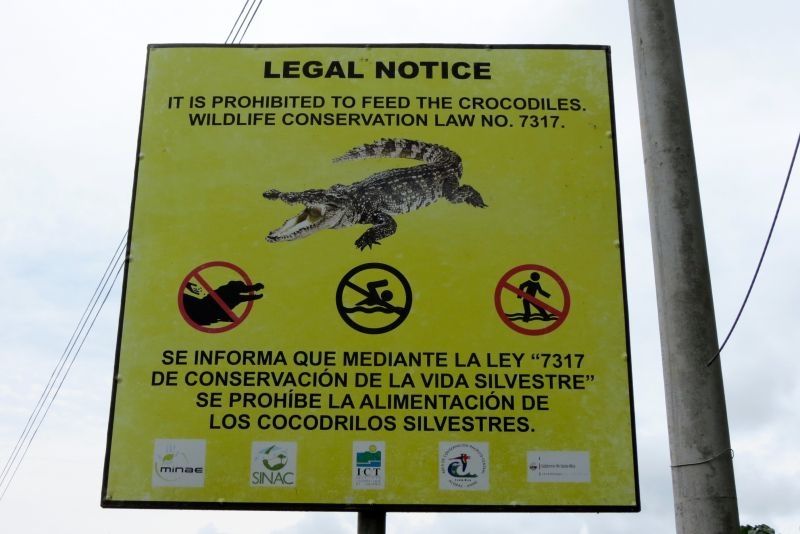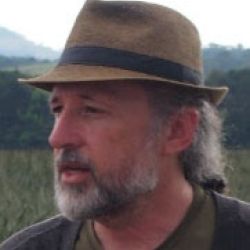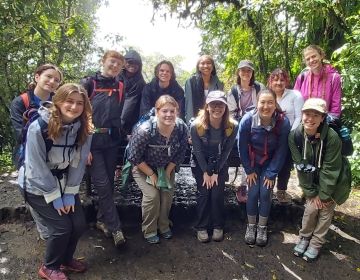Transition between Wet and Dry forest, Carara National Park
Time to move from the wet forest to the dry forest, but half way there we found Carara National Park. Carara is a moist forest in which you can see the transition between those two habitats, here you can find the best of both worlds but also encounter unique species. This was a only a morning stop, but a wonderful forest to visit and an interesting transition to see before getting to the dry forest.
Derek Frank (University of Minnesota-Twin Cities) and Vikram Norton (University of Massachusetts-Amherst) really interested in learning about this new habitat and all the species found in there.
A cup fungi (Cookeina speciosa), a really common fungi found in Carara.
The Green and Black Poison Dart frog (Dendrobates auratus), this diurnal frogs has toxins that protects it against its predators, this common species of Carara forest feed mostly on ants where they get the compounds to produce their toxins.
The word Carara comes from the Costa Rican indigenous tribe Huetar and means crocodile. Right next to the National Park the Tarcoles River contain a really high density of crocodiles in a small area, this is an uncommon and unexplainable situation, but a good stop to see many of this incredible animals.
Important sign at the beginning of Tarcoles bridge.
What are they looking at?!
Ohh yeah, all those crocodiles.
Hungry or what?. The American Crocodile (Crocodylus acutus) is one of the biggest species of reptiles worldwide, as reptiles they are ectotherms who need to bask exposed to the sun to get warm, what we are seeing here is a common behavior shown by the crocodiles when they need to cool down a little.
Related Posts
Happy Earth Day: Today and Every Day
Happy Earth Day! Every April 22, this global event comes around to remind us how precious our planet is, what sustainable efforts we can make to protect Earth, and that... keep reading
Top 10 Study Abroad Volunteer Opportunities with CIEE
Have you ever wondered if you could volunteer abroad? Perhaps you're looking into study abroad programs that provide international volunteer opportunities. If you’re itching to study abroad and truly make... keep reading
Recycling Internship with ADI San Luis
Written by Maya Peske (Cornell College), Internship in Sustainability and the Environment The road from San Luis up to Monteverde is well known by all of the people in the... keep reading
